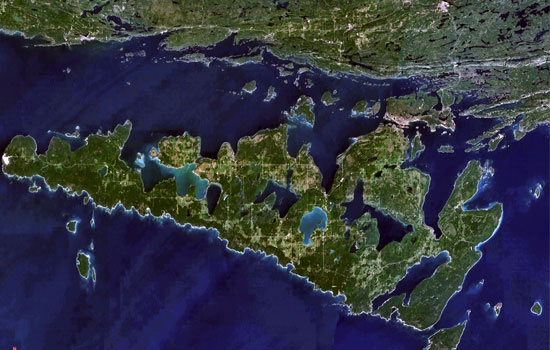MANITOULIN—Manitoulin Island has seen steady population growth over the past 20 years and this is exceptional in comparison to other Northern districts, says an official with the Rural Ontario Institute (ROI).
“On Manitoulin Island you’ve experienced pretty steady growth. From a population of 11,413 in 1996, the Island population is now 13,537 (in 2016) which reflects a 20 percent increase in population over the years. This is quite exceptional, as most northern districts have seen a decline in population,” explained Norm Ragetlie, director of policy and stakeholder engagement with ROI, on Tuesday.
“It seems Manitoulin Island has its own dynamic, in comparison to counterparts in Northern Ontario,” said Mr. Ragetlie. “Although Manitoulin Island’s absolute-total population numbers are low the area has been growing.”
However, he noted the population increases have dipped in the past few years; there was an increase in population on Manitoulin of 10 percent between 1996-2001, while overall from 1996-2016 the increase has been four percent.
The ROI is sharing an overview of population change as drawn from the February 2017 release of 2016 Census data with the release of rural Ontario’s Demography: Census Update 2016. The analysis looks at which counties, regions and communities across the rural geographies of the province are showing growth or decline.
The data shows that overall Ontario’s rural population has been growing consistently over time. The Ontario population living in a rural context is substantive and numbers 2.5 million-that is larger than the population in any of Canada’s six smaller provinces, the census reports. Approximately one in five Ontario residents lives outside of a metropolitan region.
“However, the proportion of Ontario’s population that lives in a rural context dropped slightly between the censuses of 2011 and 2016-from 20 percent to 19 percent. This is a result of several factors: rural areas tend to grow more slowly than urban areas; population growth in large rural centres over time results in some of them being reclassified as urban. Thus, the drop in the proportion of rural residents in the province is not due to an across-the-board exodus of population from rural areas. Between 1971 and 2016, 1.2 million formerly non-metro residents were reclassified,” the ROI states.
“The value of this report is that people interested in how their area is doing cam compare themselves to overall trends,” said Mr. Ragetlie. “We see regional differences in rates of growth and decline and differences within regions, where some communities next door to one another are growing and others are declining.”
Look for additional coverage in an upcoming edition providing details from the census on Manitoulin Island’s population breakdown.




